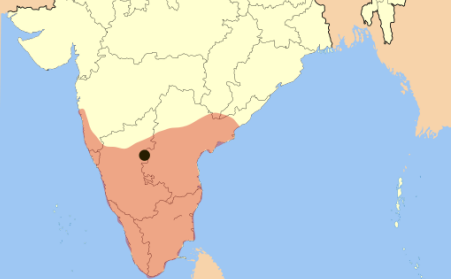 |
| (Extent of Vijayanagara Empire) |
There were attempts to plunder rich Hindu temples. Jesuits and other priests worked on conversion in the coastal regions. No, we are not talking about the present, but what was happening in South India some time in the 14th century. This threat to Hinduism was controlled and checked by the rise of the Vijayanagara empire.
One of the major tasks of the empire was to conserve the Hindu society and save it from these threats as well as from the Bahmani Sultanate. This empire, run by very able monarchs of whom the most famous was Krishnadevaraya, was the focus of a resurgent Hindu culture with the works of Sayana, and Mādhavācārya, the construction of various temples, and the promotion of religious worship, education and learning.
The third capital of Vijayanagara was in Chandragiri and a recent ASI excavation has revealed two temples in the premises of the fort.
The temples are understandably in a bad shape. Nonetheless, are quite interesting given that one is a Vaishnava temple and the other a Shivaite one. Though idols of the presiding deities were missing in both, archaeologists were able to identify their nature by studying the structures.Vaishnava temples are structurally different from Shivaite temples. The ASI also found a statue of Nandi near one temple.
The other big find was near Srinivasa Mangapuram. Sources in the ASI say 250 exquisitely carved pillars, each at least 7 to 8 ft long and all laid out in an orderly fashion, were excavated at the temple.[ASI stumbles upon 1000-yr-old temples in Chandragiri fort]